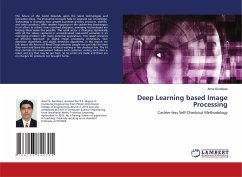
Success-Failure Learning for Humanoids: Study on Bipedal Walking
Versandkostenfrei!
Versandfertig in 6-10 Tagen
47,99 €
inkl. MwSt.

PAYBACK Punkte
24 °P sammeln!
For centuries humans have been dreaming of replacing themselves with agents in order to perform tasks that are ill-suited for humans. From the robot "Knight" designed by Leonardo da Vinci (1495) to today's robots, immense developmental milestones have been made in term of materials and actuators as well as in terms of control and information processing. While vast advances have been made in analyzing human behaviors: from the "theory of reflex movement" (1664) proposed by Descartes that introduces a reflex circuit of human behavior that was triggered by flame, to today's sophisticated models o...
For centuries humans have been dreaming of replacing themselves with agents in order to perform tasks that are ill-suited for humans. From the robot "Knight" designed by Leonardo da Vinci (1495) to today's robots, immense developmental milestones have been made in term of materials and actuators as well as in terms of control and information processing. While vast advances have been made in analyzing human behaviors: from the "theory of reflex movement" (1664) proposed by Descartes that introduces a reflex circuit of human behavior that was triggered by flame, to today's sophisticated models of the human brain that have in a large part been accompanied by new technologies for measuring brain activity. Cognitive neuroscience contributes a large part to our self-understanding. Nevertheless, we still slightly appreciate the myriad of internal processes that are at the heart of our intelligence. Perhaps we will never completely understand the human brain, but we stand to pursue this understanding. Our perspective for the integration of humanoid robots in our life will follows our updated understanding of what we are.












